Orthodontics
Services
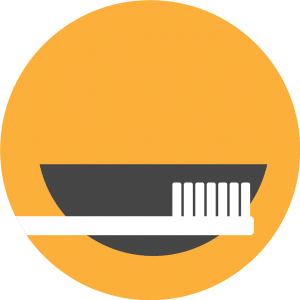
Common Problems
Improper Bite
Spacing & Crowding
Tooth Protrusion
Common Orthodontic Problems
An underbite is characterized by the lower jaw extending out, causing the lower front teeth to sit in front of the upper front teeth.
Spacing
Spacing problems may be caused by missing teeth, or they may only be a cosmetic or aesthetic issue.
Upper Front Teeth Protrusion
The appearance and function of your teeth are impacted by this type of bite. It is characterized by the upper teeth extending too far forward or the lower teeth not extending far enough forward.
Crowding
Crowding occurs when teeth have insufficient room to erupt from the gum. Crowding can often be corrected by expansion, and many times, tooth removal can be avoided.
Crossbite
The upper teeth sit inside the lower teeth, which may cause tooth stratification and misaligned jaw growth.
Overbite
The upper front teeth extend out over the lower front teeth, sometimes causing the lower front teeth to bite into the roof of the mouth.
Openbite
Proper chewing is impacted by this type of bite, in which the upper and lower front teeth do not overlap. Openbite may cause a number of unwanted habits, such as tongue thrusting.
Dental Midlines not Matched
This type of problem is caused when the back bite does not fit and match appropriately, which may negatively impact jaw and proper dental function.
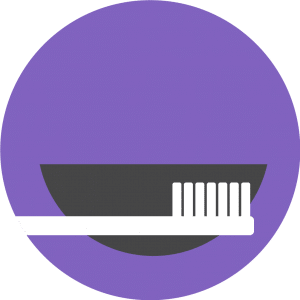
Comprehensive Treatment
Resolve Issues Early
Prevent Future Problems
Comprehensive Care and Treatment
The most common age for orthodontic treatment is during the ages of 11 and 17. By age 12, most if not all of our permanent teeth have erupted and are in place. Crooked teeth, gaps between our teeth and bad bites can easily be detected. These problems rarely correct themselves, so this is when most parents decide to seek orthodontic treatment for their children.
Why is the adolescent growth spurt so important in orthodontics?
This is a time when much of the growth of the face occurs. Treatment during this period provides an opportunity to favorably influence that facial profile in a growing child. Once growth of the facial bones is complete, correction of jaw discrepancies usually requires jaw surgery. For this reason, timely treatment may save considerable time and money.
What is the psychological impact of orthodontic therapy?
Treatment may reduce appearance-consciousness during the critical developmental years. Appearance can have an effect on popularity, social behaviors, self-expectation, personality style, and self-image. Also, orthodontic therapy may lessen the likelihood that a child will be picked on by other children.
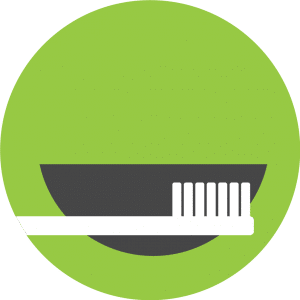
Early Treatment
Protection while Growing
Reduced Treatment Time
Future Issue Prevention
Early Treatment Information
Why is “early treatment” recommended for some children?
In some cases, preventive or interceptive care can guide the jaws and erupting teeth into more favorable positions, improve the growth and alignment of the jaws, preserve space for the permanent teeth, and /or reduce the likelihood of fracturing protruding front teeth.
Some examples of why early treatment is recommended:
- Excessive crowding
- Excessive spacing
- Crossbites
- Excessive protrusion of front teeth
- Openbite
- Thumb/Finger habits
- Impacted or unfavorable position of permanent teeth
- Jaw disproportions
With these problems, timely treatment may provide advantages that are not available later.
What are the factors involved in deciding whether early treatment is necessary?
- A thorough evaluation of the diagnostic records will determine if early (timely) treatment will achieve any of the following:
- Reduce the need to remove permanent teeth
- Simplify or shorten the time for full braces
- Influence growth of the jaws and facial profile in a positive manner
- Eliminate a problem that may cause physical or psychological harm if left untreated.
What will happen in the time between early treatment and full braces?
For most children, this growth-observation period will involve a combination of retaining the correction that’s been made, and guiding the erupting permanent teeth into favorable positions. Since the timing of treatment is critical, your child’s growth and development will be carefully monitored during this period.
Why is early removal of certain teeth sometimes necessary?
- Impacted or unfavorably positioned permanent teeth
- Damage to the roots of permanent teeth
- Severe crowding in the permanent teeth requiring lengthy and complex treatment
Clear Correct
No Braces
Eat What You Want
Easy Brushing and Flossing
Clear Correct
The clear way to straighten teeth without braces, using aligners. Aligners are removable, and virtually invisible, which means you can straighten your teeth without anyone knowing, and you can still eat and drink what you want. Also, you can brush and floss normally to maintain healthy gums and teeth, and there are no wires, metal or brackets to cause mouth abrasions.
To learn more about the Clear Correct system, please visit their website at a clearcorrect.com
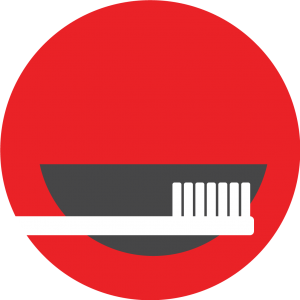
Jaw Surgery
Repositionings
Corrects Larger Issues
Jaw & Orthodontic Surgery
Just as orthodontics repositions teeth, surgical orthodontics (also known as orthognathic surgery) corrects severe jaw irregularities to improve the patient’s ability to chew, speak, and breathe and for improved facial appearances. In other words, surgical orthodontics straightens your jaw. Moving the jaws also moves the teeth, so braces are always performed in conjunction with jaw correction. This helps make sure teeth are in their proper positions after surgery.
Who needs surgical orthodontics?
Your orthodontist will consider surgical orthodontic treatment for non-growing adult patients with improper bites and those with facial aesthetic concerns. Jaw growth is usually completed by age 16 for girls and 18 for boys. All growth must be completed before jaw surgery can be performed. However the pre-surgical tooth movements can begin one to two years prior to these ages.
How does it work?
During your orthodontic treatment, which usually lasts 6-18 months, you wear braces and will visit your orthodontist for scheduled adjustments to your braces. As your teeth move with the braces, you may think that your bite is getting worse rather than better. However, when your jaws are placed into proper alignment during orthognathic surgery, the teeth will then fit into their proper positions.
Surgery is performed in the hospital with an oral surgeon, and can take several hours, depending on the amount and type of surgery needed. In lower jaw surgery, the jawbone behind the teeth is separated and the tooth-bearing portion is moved forward or backward, as needed. In upper jaw surgery, the jaw can be re-positioned forward or backward, or the jaw can be raised or lowered. Certain movements may require the jaws to be separated, with bone added/removed to achieve the proper alignment and stability. Other facial bones that contribute to alignment may also be re-positioned or augmented.
When you have completed surgery, you should be able to return to school or work within two weeks. After the necessary healing time (about 4-8 weeks), your orthodontist “fine-tunes” your bite. In most cases, braces are removed within 6 to 12 months following surgery. After your braces are removed, you will wear a retainer to maintain your beautiful new smile.
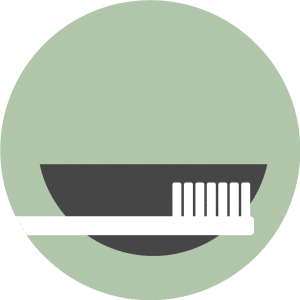
Retainers
Removable Retainers
Fixed Retainers
Maintain Your Smile
Retainers
The Hawley retainer, one of the most common types, is a removable retainer made of a combination of metal wires and sturdy acrylic, and is designed to keep your teeth in place. This retainer is specially made from impressions of your teeth so that it fits snugly and comfortably in the roof of your mouth, while any wire or acrylic framing keeps your teeth in perfect position. The acrylic can also be personalized with a large number of colors and/or patterns.
The Essix retainer is a transparent removable retainer that fits over the entire arch of teeth. Similar to Invisalign trays, Essix retainers have no wires. They are inexpensive and easier to wear. They can be used for other treatments as well, including tooth movement and bridges.
Your retainers should be worn 12hrs a day with the exception of eating and brushing your teeth. Your retainer should also be removed when participating in sports that require a mouth-guard or while swimming. After 12 months of wear, we may revise your retention treatment, allowing the retainer to strictly be worn at night.
Fixed (Bonded) Retainers
Bonded lingual retainers are cemented directly to the inside surface of your lower front teeth. This is one of the best ways to prevent your lower teeth from shifting as it is permanently attached! Patients with bonded lingual retainers must be careful with their bite as the bonding material may break due to incorrect biting and cause teeth to shift quickly. As with removable retainers, it is important to keep them clean. When brushing, make sure to carefully clean the inside of your lower teeth as well as the wire. If your retainer breaks at any time during treatment, please do not adjust it yourself. Call us immediately to schedule an emergency appointment. There is an added fee for broken or replacement of all retainers.
Your final orthodontic result depends on your retainers, so follow through with the hard work you’ve put in so far.
